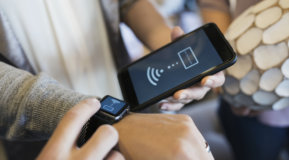There's a lot of focus on how mobile is transforming patient care in hospitals, but I recently attended an event that got me thinking: How are aged care facilities using mobile technologies to provide a better experience for older people?
An Aging Population
According to the National Institutes of Health, 8.5 percent of people worldwide—617 million—are 65 and older. That number is expected to grow exponentially over the next 40 years.
Here in Australia, the number of older people is steadily increasing, according to the Australian Institute of Health and Welfare. In fact, there will be 9.6 million people aged 65 and over and 1.9 million people aged 85 and over by 2064, according to the Australian Bureau of Statistics.
Clearly, there's a pressing need for greater residential and home care as people age.
A Better Quality of Life
Aged care homes starting to adopt mobile health technologies not only to provide better care but also a better quality of life.
New mobile apps can keep older people happier and help them feel less isolated. At the conference I recently attended, I saw a really cool tablet-based application that one of our partners has developed. But unlike just giving grandma an iPad so she can keep in touch via Facebook, the application is fully integrated into the aged care centre's resident experience.

What I mean by this is that the tablet is provided to the resident as part of their accommodation service. The tablet integrates all aspects of their interaction with the facility, including meal selection, communication with healthcare staff, entertainment such as Netflix, activity booking, Skype calls to family and much more. However, the most impressive function is the system's ability to be remotely accessed and managed by the resident's family, which allows them to customize the tablet for what their loved ones like and keep track of what they have been up to via the social activities updates, which are regularly loaded into the system.
This mobile health application is making a real impact on the quality of the lives of aged care residents. They feel less isolated and far more stimulated. Overall they're much happier each day. And since the system is provided by the facility, it is fully managed. It's a reminder of the impact a Mobile First Platform can have on people's lives.
Better Care Demands Better Wi-Fi
Like hospitals, aged care homes use a variety of clinical applications, such as electronic medical records, nurse call systems, IP phone systems, and of course, lots of mobile devices. Smart devices can monitor residents' health and well-being, such as vital signs and even help manage incontinence. Smart beds can help people get a better night sleep as well as reduce bedsores and patient falls.
To successfully deploy patient engagement solutions, clinical applications, and fast-growing number and variety of smart medical devices, aged care homes need fast, reliable, and robust wireless connectivity.
But the reality is that most wireless networks in aged care homes were built for occasional use, and won't support heavy-duty applications like streaming videos, phone calls, and regular, repeated usage by residents and staff alike.
To deliver better care and a better quality of life, aged care homes need a Mobile First Platform with connectivity that's fast, reliable and secure. Great Wi-Fi, combined with smart policy management, enforcement based on user roles, and built-in security, aged care homes can improve the patient experience and empower healthcare professionals to provide the best quality of care.
The use of mobile technology within aged care homes is helping to bridge the isolation gap for older people, making them feel happier and more engaged. Isn't that what we all want for our loved ones?
Want to Learn More?
Read these popular healthcare blogs:
Five Big Challenges Deploying Wireless in Healthcare
BLE Asset Tracking Helps Hospitals Find Medical Devices Stat




